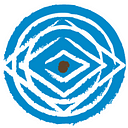Disconnect — Decenter — Re-Envision
“We travel, initially, to lose ourselves, and we travel, next, to find ourselves. We travel to open our hearts and eyes. . .” Pico Iyer
It’s been eight years since World Leadership School sent its first students abroad with the mission of “empowering young leaders to find innovative solutions to the world’s pressing problems.” Through the years, we’ve learned valuable lessons around how to spark student learning around real world problem solving.
Much of what we have learned can be summed up by the words “Disconnect, Decenter, and Re-Envision.” We began using this phrase a few years ago at World Leadership School to describe our approach to building leaders. Over time, we’ve seen how this recipe has produced powerful mindset shifts for the students, teachers, and school leaders with whom we work. Here’s how it works:
Disconnect. When was the last time you turned off your cell phone for an entire weekend? Every time I do this, I feel more relaxed and my senses open up to sounds and smells I had not noticed before. I sleep better and I find myself laughing more. I engage with people at a deeper level, and can get lost in a single task for hours at a time. These are wonderful but rare states of mind in our fast-paced world.
We are big proponents of technology at World Leadership School (see our latest TabLab venture), but we also believe in taking breaks from technology. That’s why we have an “unplugged” policy on all of our Collaborative Leadership Programs. We want students to see, hear, and taste. We want them to forget, for a few weeks, about what’s happening back home and on Facebook. We want them to work on being present.
Decenter. The work of disconnecting prepares students for the next phase of learning when they live and work in a completely new community setting in Africa, Asia, Latin America or rural areas of the US. Mindset shifts do not come easy for any of us. We all have perspectives and beliefs about the way the world works. These beliefs are reinforced by the people we speak with every day, our social media networks, and our daily (and largely unconscious) habits. Through community immersion, students are slowly pushed off balance and stripped of their ingrained views about the way the world works. But this process only happens when students are given ample time to reflect, both alone and in a group setting. Our instructors use group dynamics activities to help students form into a cohesive and supportive group.
Re-Envision. This final phase of learning is about helping students see things from a new perspective as they work and learn alongside host community students and local leaders. Helping students change perspective in a 2-week program is challenging, but possible when students spend most of their time in a single community and focus on building relationships. It’s also possible when there is a focused curriculum, and a long-term school-to-school partnership in place. That’s why we only work with schools, both in North America and abroad, which want to build long-term relationships. These kinds of relationships are key to producing mindset shifts and sparking positive change in the world.
To encourage a solid community relationship, we invite local students to participate in our programs and we train our instructors to run our curriculum in different languages. We also support and recruit local leadership who help our students find their inner leader and re-envision their future lives. We believe community leaders are incredible case studies in global leadership, and our students spend time understanding how these leadership think, talk and live their leadership story, every day.
In short: on our travel programs, we want our students and teachers to disconnect from technology and their lives back home; we want to immerse them in an unfamiliar community environment in order to decenter them; and we want to pair them with host community students and leaders who can help them re-envision themselves and their place in the world.
Not all of our Collaborative Leadership Programs move through all three levels but, when they do, the results are impressive. These student and faculty return to their school with lots of energy, which can be used to drive change in the schoolhouse. Here’s what one student wrote last month after returning from Peru: “This experience and the wonderful people inside and outside of our group have changed my perspective on everything… [it was an] experience of a lifetime with an amazing group of people, during which I learned a lot about myself and the world.”
— Ross Wehner
Founder, World Leadership School
Executive Director, World Leadership Foundation
